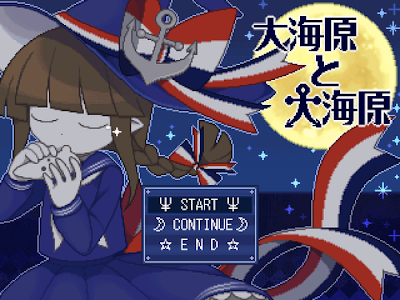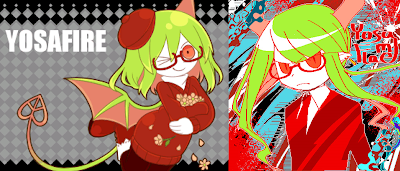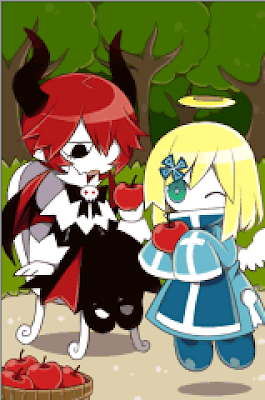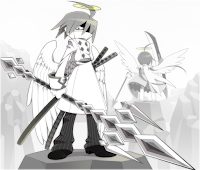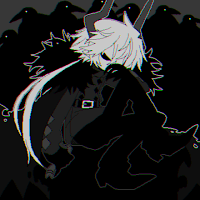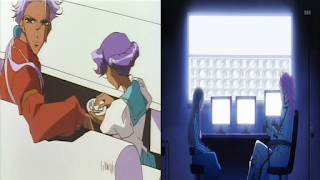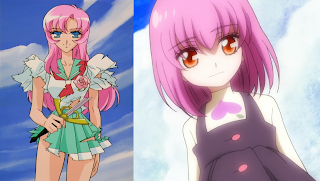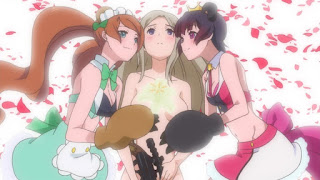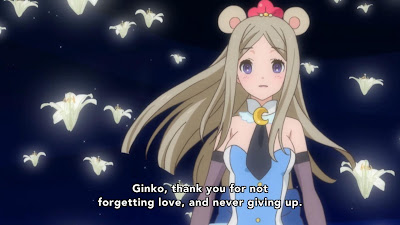Warnings:
Spoilers
If you are triggered by, or sensitive to, the topic of rape, either don't read this or tread carefully; I will also advise you not to play the game if this is the case for you.
Earlier this month, I made a little post where I put down some of my thoughts and theories on a Deep Sea Prisoner game called The Gray Garden, but today, I just wanted to share some of my thoughts and opinions on the controversy over the ending to one of its sister games, Wadanohara and the Great Blue Sea.
 Chances are that if you've heard of this game, you know about how controversial it is due to one of its possible endings, the worst possible normal ending that you can get, and the one that every player is forced to go through before moving on to see the two other, better endings. The bad normal ending has enraged and triggered a lot of people, and the controversy over the entire thing is so intense that Mogeko (the name that the game developer, Deep Sea Prisoner, often goes by) has been receiving lots of death threats over the game, despite the fact that the game's main page even has a warning about it containing implied sexual assault. The threats have gotten so bad that Mogeko has even asked that no one releases any more play throughs, let's plays, or livestreams of their games.
Chances are that if you've heard of this game, you know about how controversial it is due to one of its possible endings, the worst possible normal ending that you can get, and the one that every player is forced to go through before moving on to see the two other, better endings. The bad normal ending has enraged and triggered a lot of people, and the controversy over the entire thing is so intense that Mogeko (the name that the game developer, Deep Sea Prisoner, often goes by) has been receiving lots of death threats over the game, despite the fact that the game's main page even has a warning about it containing implied sexual assault. The threats have gotten so bad that Mogeko has even asked that no one releases any more play throughs, let's plays, or livestreams of their games.
So what is this even all about? Well, in the bad normal ending, with the Red Sea Witch, the main character, Wadanohara, is implied to be raped by the antagonist, Sal. Also take note that this is done in front of her severely injured shark boyfriend (and Sal's younger twin brother), Samekichi, who is helpless to the entire situation.
A lot of people seem to be writing those offended off as being overly sensitive to the subject due to this not being the first game Mogeko has added sexual assault into (as that's pretty much the entire plot of Mogeko Castle, and The Gray Garden does contain a scene where Ivlis is implied to be groping poor Yosafire), and also due to the warning put up on the main page. And while I'm not saying that this last point, at least, is wrong, I also don't think that the rape scene itself is what got most people upset about the entire ordeal. I think that the real problem lies with the fact that we are forced into sending Wadanohara in to Sal's hands.
 You see, at the end of the game, we're given a "choice" of what to do in order to get to the endings. The problem, however, is that each choice pops up one at a time. So only after we get the Red Witch and play again do we get the option that leads to the Blue Witch, and finally, the choice that leads to the Sea Witch. In other words, we are literally forced into selecting the choice leading to Wadanohara being raped before we can get our bitter-sweet ending with the Sea Witch. The worst part is probably that, once you see the option "Trust Sal" come up, you know what's going to happen; I mean, he had already tried to sexually assault Wada before but was stopped by Samekichi. I mean, what else do you think he'll try, when Samekichi is more or less out of the picture, Wadanohara is desperate to save her home, and Sal has just stated that literally the only true thing he's told her is that he loves her? The dude pretty much just told her that she shouldn't trust him. But in order to progress in the game, we are forced to trust Sal.
You see, at the end of the game, we're given a "choice" of what to do in order to get to the endings. The problem, however, is that each choice pops up one at a time. So only after we get the Red Witch and play again do we get the option that leads to the Blue Witch, and finally, the choice that leads to the Sea Witch. In other words, we are literally forced into selecting the choice leading to Wadanohara being raped before we can get our bitter-sweet ending with the Sea Witch. The worst part is probably that, once you see the option "Trust Sal" come up, you know what's going to happen; I mean, he had already tried to sexually assault Wada before but was stopped by Samekichi. I mean, what else do you think he'll try, when Samekichi is more or less out of the picture, Wadanohara is desperate to save her home, and Sal has just stated that literally the only true thing he's told her is that he loves her? The dude pretty much just told her that she shouldn't trust him. But in order to progress in the game, we are forced to trust Sal.
I don't think it really helps that, throughout the first half of the game, Sal was someone that we (or at least I) trusted and saw as Wadanohara's comrade, so when his true nature was revealed, it suddenly becomes a lot more uncomfortable than if Wadanohara was being pined after by a complete stranger. This is someone that Wada trusted, that she saw as her friend. The entire situation somehow manages to make itself even more uncomfortable when you consider the fact that Wadanohara is still just a young girl, mentally (but somehow 100+ years old physically). I mean, the girl's bio says that she likes everyone in the sea and has no dislikes, for Pete's sake! "Still so young, she doesn't know the dirty side of the world"! So this just makes Sal's actions seem almost pedophilic, more disgusting. Which is why Sal is total trash and belongs in the garbage.
All this being said, I'm not trying to say that sending poor Mogeko death threats is justified in any way (especially since they did put up a warning), but I am trying to explain why the Red Witch ending has made so many people upset, as I think its stupid and insensitive to say that everyone is being overly sensitive to the game's contents. And if you were offended by the game, just keep in mind that just because someone creates or likes a character who does horrible things in no way means that they condone their actions. That'd be like saying that just because I happen to think that Idate, the strolling orca in the game, is a fun character, I want to go out and rip peoples' arms off.
So, despite everything I said, I still personally enjoy the game and will continue to do so. Just understand that there can be a fine balance between disliking a game because of its contents and sending death threats to people because of something in a game that they made. Seriously, not cool!
OK. Rant finished.
Now let's bask in the beautiful bonus material Mogeko provided us of Wada taking out the trash. I'm sure that this is something we can all enjoy.
